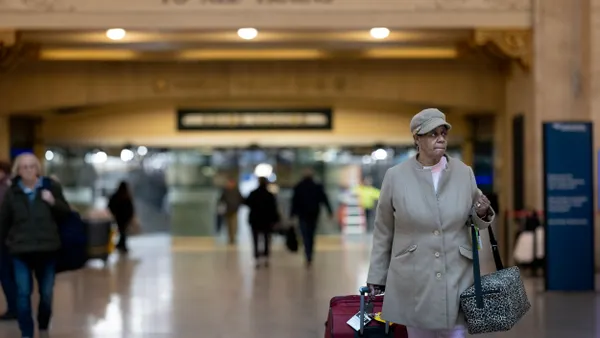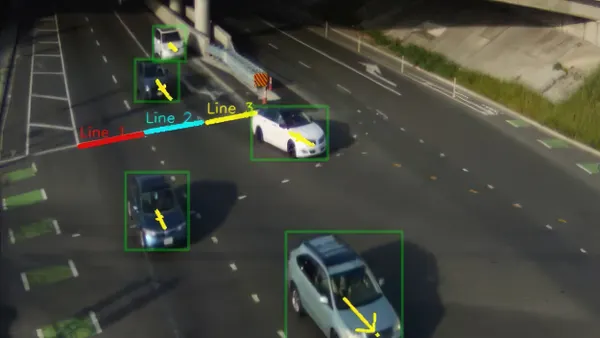Editor's Note: This is the first part of a multi-part series that will track how Houston and other cities are recovering from the damages of Hurricane Harvey — and planning for future disasters.
Houstonians may have never imagined that the fourth most-populous U.S. city, with 2.3 million residents, could be brought to its knees by a catastrophic natural disaster, leaving dozens dead, thousands of residents displaced and potentially billions of dollars worth of damage.
In fact, most U.S. residents never fathomed the current status of Houston. Not until it was too late.
Hurricane Harvey, which made landfall on Aug. 25 on Rockport, TX, has been dubbed a "500-year flood," reaching more than 50 inches of rainfall in some parts of Houston — equivalent to the total amount of precipitation that Washington, D.C. experienced in the past 15 months.
In the days leading up to Harvey's landfall, Houston Mayor Sylvester Turner decided not to evacuate the city — a decision receiving major criticism despite alternative consequences that the city could have faced. Now, despite millions in donations and an abundance of volunteers from around the country who quickly ran to the aid of the survivors, city officials and relief organizations are scrambling to save the city and its residents.
As water begins to recede in the city, officials must assess the damage and determine where city officials could have made better decisions. Because the truth of the matter is the "500-year flood" occurs much more often than the title suggests — and this may just be the beginning.
Quantifying the damage, and assessing remediation
Here are the impacts that the hurricane has had on community health, safety, waste, energy, transportation, construction and communication in Southeast Texas and other affected areas since Harvey made landfall on Aug. 25.
Health and safety
- There have been nearly 40 confirmed and suspected flood-related deaths.
- About two dozen area hospitals remained closed as of Aug. 30.
- Health insurance companies have been asked by the state "not to deny or assess penalties for out-of-network claims from healthcare services sought during the state-declared emergency and to delay their filing deadlines," according to Healthcare Dive.
- Nearly 35,000 people have taken refugee in 231 shelters.
- Dallas has prepared to host "thousands upon thousands upon thousands" of Houston evacuees.
Construction and transportation
- An estimated 30,000 to 40,000 homes have been destroyed.
- More than half of Houston's residential and commercial properties that are at high or moderate risk of flooding are not in the Federal Emergency Management Agency's Special Flood Hazard Areas, meaning most do not have flood insurance.
- Some roads are showing signs of potential collapse, while other roads have been closed due to sinkholes.
- Up to 500,000 vehicles have been ruined, marking the greatest car wreckage in U.S. history.
Waste management
- Houston-area companies like Waste Management are preparing for what could be a years-long cleanup effort.
- Trash pickup resumed Aug. 31 to kickstart the debris removal process.
Energy, oil and gas
- 294,000 people from Corpus Christi to Port Arthur remain without power as of Aug. 31.
- 22% of the U.S. refining capacity is now offline.
- National average gas prices have climbed 3%, and are expected to continue increasing.
- At least 2 million pounds of pollutants have been released from oil refineries and chemical plants.
- A 1.5-mile radius in the town of Crosby has been evacuated due to flood-related explosions at an Arkema chemical plant.
Communication
- The FCC reported on Aug. 29 that 283,593 wireline telecom or cable service customers across Texas and Louisiana were out of service and 15 public safety answering point (PSAP) experienced outages.
- AT&T deployed two charging stations, seven portable cell sites and an emergency communications vehicle to the affected areas.
- Due to power outages and spotty service, many affected residents turned to Twitter and Facebook to call for help.
Where does Houston go from here?
After making a second landfall on Port Arthur, TX, the wrath of Harvey is beginning to die out. Unaffected cities may take a sigh of relief, but now is not the time for coastal cities to relax. In fact, a new storm is brewing.
Hurricane Irma has formed in the Atlantic Ocean with potential to become a Category 4 storm according to USA Today. While the National Weather Service is unclear of Irma's exact path, many wonder: Will history repeat itself?
As climate activists and skeptics debate if Harvey was the result of climate change, it is undeniable that the effects of Harvey were unprecedented, indicating a new level of reality that cities could face if hit with a similar hurricane. Resilience strategies, both for disaster prevention and remediation, need to be discussed in all smart cities — and actively put into place. As Scott Tew of Ingersoll Rand recently told Smart Cities Dive, "You can't do this day of or week of."
Resilience must be a priority now.
Smart Cities Dive will explore Houston's recovery efforts and future resilience plans for coastal cities in upcoming parts of this series.










